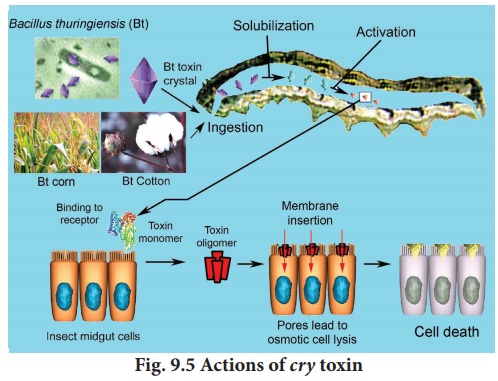
Laboratory of Entomology, Wageningen University, PO Box 8031.Progress 11/08/10 to 11/07/15 Outputs Progress Report Objectives (from AD-416): The long-term objective of this project is to develop an improved understanding of the biology, nutrition, and behavior of natural enemies of pest arthropods. Hamatum and other spp.1 Need for Quality Control of Mass- produced Biological Control Agents. The use of plant growth promoting rhizobacteria (PGPR) is a proven environment friendly way of controlling plant disease and increasing crop yield.Trichoderma spp., including T. Excess use of pesticides through chemical disease control measures is a serious problem for sustainable agriculture as we struggle for higher crop productivity. Crop disease remains a major problem to global food production.


3: Colonization of root hairs of corn by the highly rhizosphere competent strain of T. However, most strains lack this ability.Fig. Thus, if added as a seed treatment, the best strains will colonize root surfaces even when roots a meter or more below the soil surface and they can persist at useful numbers up to 18 months after application. Once they come into contact with roots, they colonize the root surface or cortex, depending on the strain. The most strongly rhizosphere competent strains can be added to soil or seeds by any method. Some strains are highly rhizosphere competent, i.e., able to colonize and grow on roots as they develop.
Several new general methods for both biocontrol and for causing enhancement of plant growth have recently been demonstrated and it is now clear that there must be hundreds of separate genes and gene products involved in these processes. Grow and proliferate best when there are abundant healthy roots, they have evolved numerous mechanisms for both attack of other fungi and for enhancing plant and root growth. Attack, parasitize and otherwise gain nutrition from other fungi. Plant Disease 84:377-393).In addition to colonizing roots, Trichoderma spp.
Consequently, the taxa recently have gone from nine to at least thirty-three species.Most strains are highly adapted to an asexual life cycle. Traditional taxonomy was based upon differences in morphology, primarily of the asexual sporulation apparatus, but more molecular approaches are now being used. The sexual stage, when found, is within the Ascomycetes in the genus Hypocrea. However, for a few strains the sexual stage is known, but not among strains that have usually been considered for biocontrol purposes. Solubilization and sequestration of inorganic nutrientsMost Trichoderma strains have no sexual stage but instead produce only asexual spores. Tolerance to stress through enhanced root and plant development
Thus, the fungi are highly adaptable and evolve rapidly. Various asexual genetic factors, such as parasexual recombination, mutation and other processes contribute to variation between nuclei in a single organism (thallus). Most cells have numerous nuclei, with some vegetative cells possessing more than 100.
The organism grows and ramifies as typical fungal hyphae, 5 to 10 µm in diameter. The recent discovery in several labs that some strains induce plants to "turn on" their native defense mechanisms offers the likelihood that these strains also will control pathogens other than fungi.Fungal thalli are shown in the figure at the beginning of this web page. However, most Trichoderma strains are more efficient for control of some pathogens than others, and may be largely ineffective against some fungi. This is an extremely important quality control item for any company wishing to commercialize these organisms.So far as the author is aware, different strains of Trichoderma control every pathogenic fungus for which control has been sought. This, coupled with tight control of variation through genetic drift, allows these commercial strains to be genetically distinct and nonvariable.
Some lines have been selected or modified to be resistant to specific agricultural chemicals. Possess innate resistance to most agricultural chemicals, including fungicides, although individual strains differ in their resistance. Intercalary resting chlamydospores are also formed, these also are single celled, although two or more chlamydospores may be fused together.Trichoderma spp.
They are frequently used in the food and textile industries for these purposes. They are used commercially for production of cellulases and other enzymes that degrade complex polysaccharides. Are highly efficient producers of many extracellular enzymes.
This site will not knowingly list any nonregistered products or strains offered for sale in commercial agriculture even though these products are common and their sale is widely ignored by governmental regulatory agencies.For many years, the ability of these fungi to increase the rate of plant growth and development, including, especially, their ability to cause the production of more robust roots has been known. Some of these companies are listed at the end of this web page. There are several reputable companies that manufacture government registered products. The enzymes are also used in poultry feed to increase the digestibility of hemicelluloses from barley or other crops.As noted, these fungi are used, with or without legal registration, for the control of plant diseases.

Data are from Lorito et al. Tobacco and potatoes, shown in this figure, were transformed to express the fungal endochitinase gene, which resulted in high levels of resistance to Alternaria alternata (tobacco) and Rhizoctonia solani (potato). Harzianum have been inserted into plants, where they provide resistance to several diseases.
Basic Biology, Taxonomy and Genetics, Taylor & Francis, London. Trichoderma and Gliocladium. Some of these are listed below.Kubicek, C.
They can be purchased on the Amazon.com web site.The following books contain substantial amounts of information regarding biocontrol with Trichoderma, and also include information on other topics.Chet. 393 pg.The preceding two multi-author books contain most pertinent information on these fungi known through 1997. 2, Enzymes, Biological Control and Commercial Applications.
Biotechnology in Plant Disease Control. Pest Management: Biologically Based Technologies. Wiley-Interscience, New York, 372 pg.Lumsden, R.


 0 kommentar(er)
0 kommentar(er)
